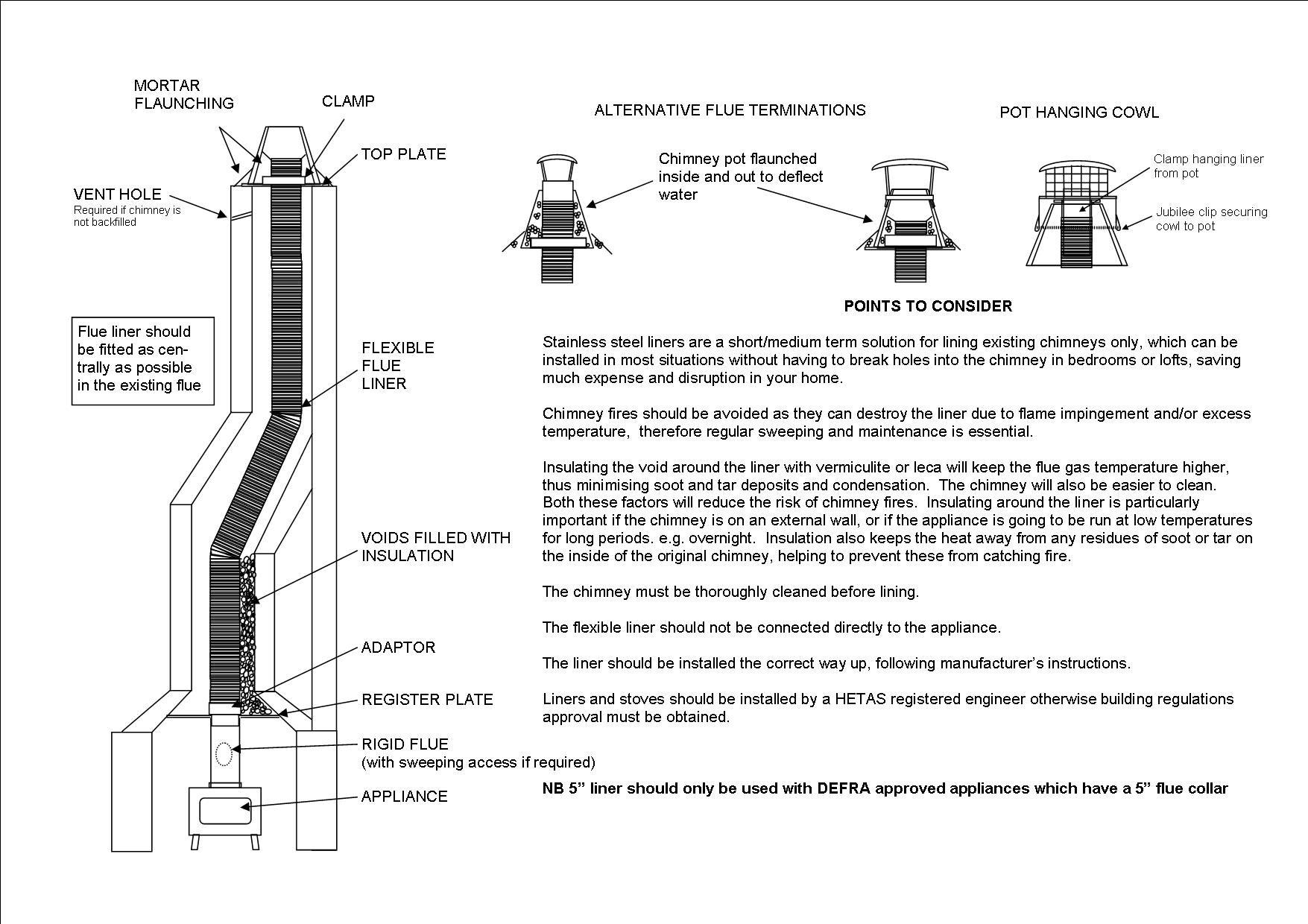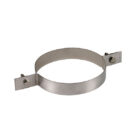- Stainless steel liners are a short/medium term solution for lining existing chimneys only, which can be installed in most situations without having to break holes into the chimney in bedrooms or lofts, saving much expense and disruption in your home.
- Chimney fires should be avoided as they can destroy the liner due to flame impingement and/or excess temperature therefore regular sweeping and maintenance is essential.
- Insulating the void around the liner with vermiculite or leca will keep the flue gas temperature higher, thus minimising soot and tar deposits and condensation. The chimney will also be easier to clean. Both these factors will reduce the risk of chimney fires. Insulating around the liner is particularly important if the chimney is on an external wall, or if the appliance is going to be run at low temperatures for long periods. eg overnight. Insulation also keeps the heat away from any residues of soot or tar on the inside of the original chimney, helping to prevent these catching fire.
- The chimney must be thoroughly cleaned before lining.
- The flexible liner should not be connected directly to the appliance.
- The liner should be installed the correct way up, following manufacturer’s instructions and meeting any current building regulations.
please note: all installations must be fitted by a qualified Hetas engineer or with building regulation approval.
12,376









